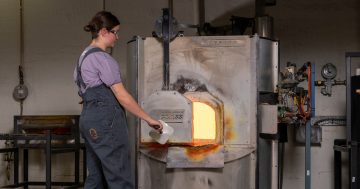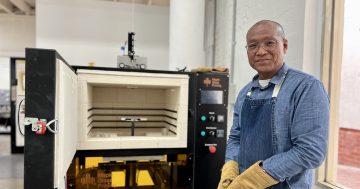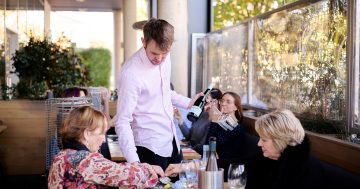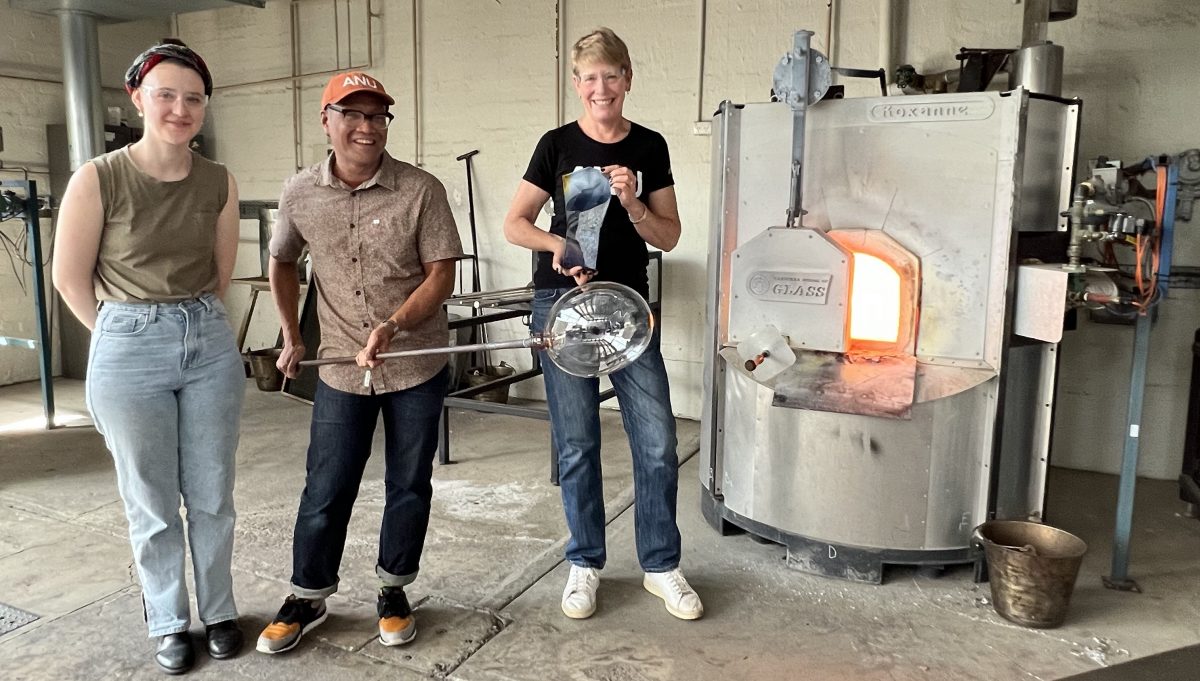
ANU Glass Workshop student Isobel Kennedy, head of glass Dr Jeffrey Sarmiento and technical officer Catherine Newton have all had a hand in creating the Australian of the Year Awards. Photo: Claire Fenwicke.
Each year our notable Australians are presented with a polished blue trophy featuring the Southern Cross and the Star of Federation.
Behind the scenes, hours of work have been poured into each Australian of the Year award by the staff and students of the ANU Glass Workshop.
Technical officer Catherine Newton has been making the honours since the university began creating them five years ago.
In total, staff and students need to make 36 awards, which equates to a lot of time in the workshop.
“Each award takes about 10 hours, so it’s quite an exhaustive process,” Ms Newton said.
Silicon moulds are used to create the first version in cold glass, which is then heated up very slowly for a week in a kiln to reach about 830 degrees.
“Then it all melts in and settles so the glass all falls into the facets and forms the stars,” Ms Newton said.
“After it’s been fired, I take it out of the kiln and then I have to work on what is called cold working, so taking the rough shape and I work on a flatbed [to polish it].
“There are about eight or nine steps before we get to the final polished product, so we use things like angle grinders with water coming out, we use industrial diamond pads to remove glass … and then on the final polish we use cerium, which is another natural product, to bring it back to a full polish.”
Ms Newton has attended the national presentations each year to see her creations passed to the winners.
“What really gets me, that these people who do so much work in the community, who have volunteered so much of their time or their whole lives to make Australia a better place … they always feel so humble,” she said.
“I love my job, I love working with glass, and to see them handed off to someone who’s done so much for our community is special.”
Ms Newton sometimes knows who is going to win the awards ahead of time, given their names need to be sandblasted onto the trophies before the ceremony.
“I’ve had funny connections a couple of times, like when Patrick Mills was the ACT Young Australian, well my kids went to school with him, so it was a bit exciting to realise that Patrick Mills was going to get an award that I made and that we actually knew him through school,” she said.
The recipients’ names are sandblasted on by Ian Broadbent at Capital Trophies and Sportswear in Hume.
For the first time, the trophies will be made with Australian glass, sourced from James Thompson in the Rubicon Valley in Victoria, while the boxes are handmade in Adelaide.
Previously New Zealand glass has been used.
COVID-19 hindered student participation in recent times, but they’re now back on board to lend their skills to the trophies.
Isobel Kennedy is one of the students who has helped make the awards.
“For me, it’s a proud moment to say I’ve worked on the Australian of the Year Awards in some capacity,” she said.
“Obviously, as it’s not our own work, we’re really not wanting to stuff it up as it holds so much meaning, so that’s definitely playing on our minds.
“But it also lets me know my skills are up to par to be able to work on a job like this.”
Head of glass Dr Jeffrey Sarmiento said student participation was important for both the country and their education.
“It’s that professional level engagement with commissions, it’s a proper job skill for them,” Dr Sarmiento said.
“I don’t know if award-making is front of mind [for glass students], but it’s a great business.”
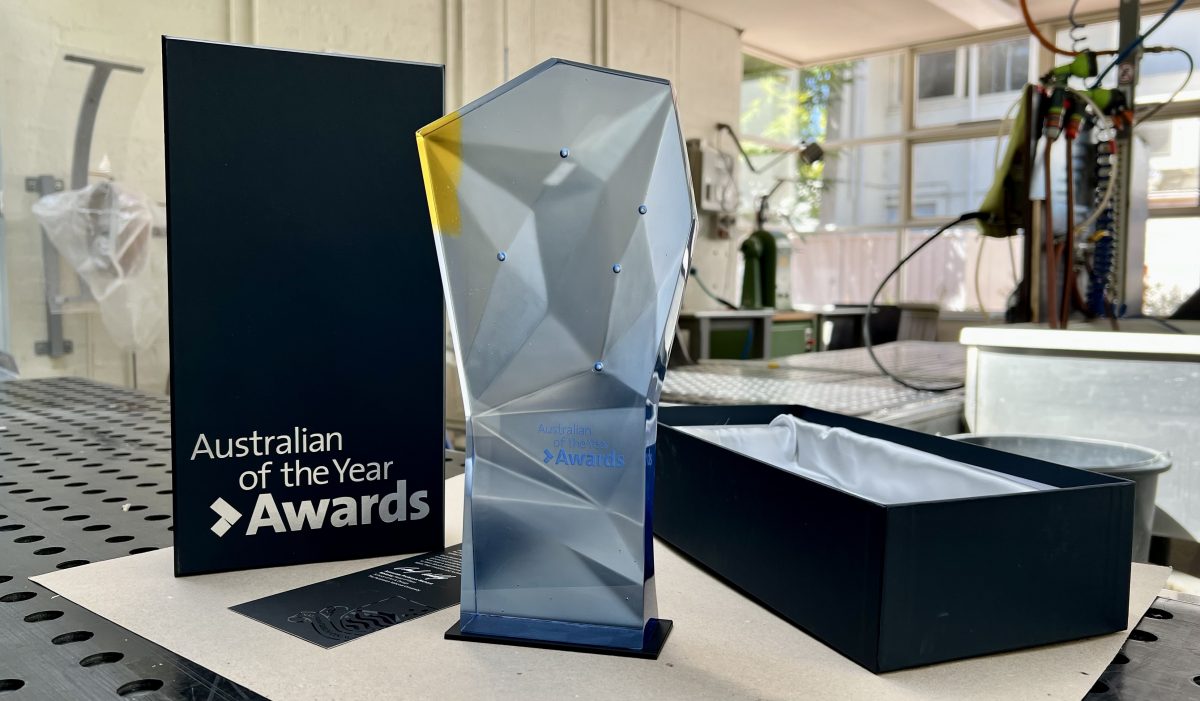
The Australian of the Year Awards are being made with Australian glass for the first time. Photo: Claire Fenwicke.
He wanted everyone who viewed the awards either on television or in person to remember that “extremely skilled human hands” had created them.
“If you see something on television, a shining, crystal award, somebody’s made that,” Dr Sarmiento said.
The trophies aren’t the only Canberra connection to the awards ceremony.
ANU School of Music students will also be taking part, with the Chamber Choir performing I Am Australian as part of the presentations.












